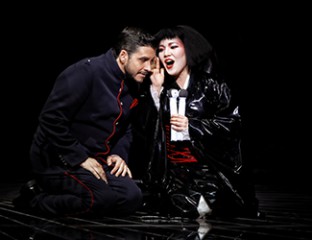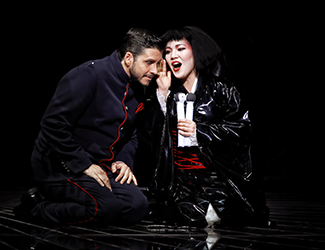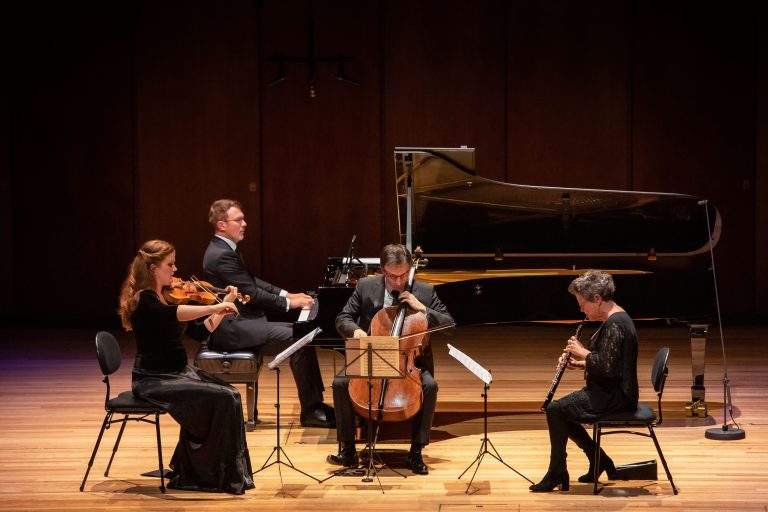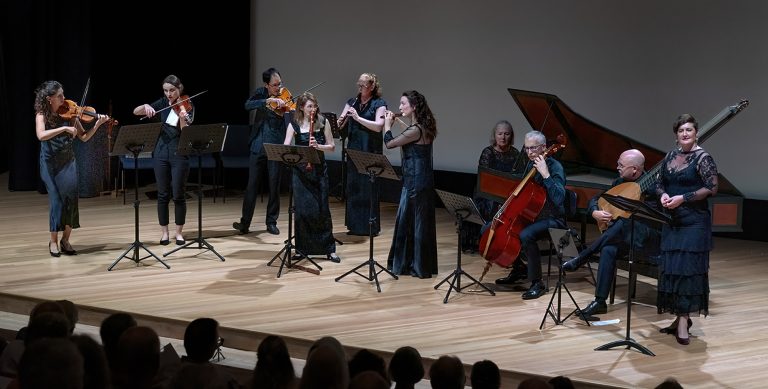Opera Review: Madama Butterfly/Opera Australia

Madama Butterfly
Opera Australia
Joan Sutherland Theatre, Sydney Opera House,
28 June 2019
Written by Deen Hamaker
The premiere of Madama Butterfly at Milan’s Teatro alla Scala in 1904 was one of the most famous fiascos in operatic history. However, with a few revisions, success followed and today, 115 years later, it is one of the most popular of all operas with instantly recognisable music by Giacomo Puccini. Set in Nagasaki at the end of the 19th century, it is the tragic tale of Cio-Cio-san (meaning “butterfly” in Japanese), a down-at-heel former geisha. Her American husband, Benjamin Franklin Pinkerton, abandons her, leaving her with child. When he returns with his new American wife, Butterfly gives up her son to the couple and commits seppuku, ritualised suicide.
Despite this tragic romance, the lush, evocative score and exotic setting make Madama Butterfly an ever-popular night at the opera. Opera Australia’s new production, directed by Graeme Murphy, takes us not to late 19th century Nagasaki, but to a dark and gloomy future – an Orientalist netherworld of murky tones of grey and black. It is in turns, shocking and mundane, garish and bland. Murphy has been bold with this venture, both technologically with the innovative use of digital LED screens and by not eschewing ugly truths. As we have seen in recent years, revisionist productions of classic operas can work spectacularly, but this holds true only when the director’s vision is clear and the technology at their disposal is used to tell the story in their own way. Unfortunately, this production is replete with possibly every dark, sexual and menacing idea that Murphy and his collaborators entertained. No sooner than one idea appears, it disappears and by the time we reach Act III, the eye and mind are so exhausted from the myriad ideas, we feel little emotion for Butterfly, as the character has had little chance to develop and the audience has not had the opportunity to get to know her. If the worst crime a theatre director can commit is to bore their audience, then creating a soulless production of such a passionate tragedy is just as bad.
Murphy’s production resonates with hints of Westworld, Blade Runner and Ghost in the Shell. It is a dark world filled with garish lights and lurid sexuality; an Orientalist post-contemporary world of digital robotic servants, smart phones and rubbish dumps. And yes, as has been mentioned in the promotional material, this production includes graphic depictions of Japanese rope bondage, known as shibari. This is not a production for children or the prudish. Experts in shibari have been enlisted to help with the tying and to provide genuine Japanese jute rope in bright vermilion. But after a brief show before the overture and one later, when a despairing Butterfly bemoans her impending return to her former geisha life, the red rope disappears and we are left to wonder its significance and why it was included at all. The concept negatively expresses a kind of Orientalist titillation, sexualising another culture and presenting it for the consumption of a Western audience. Productions of Madama Butterfly walk a fine line between Orientalist exploitation, appropriation and cultural sensitivity. In this case, some of the images and ideas express a very Western view of a futuristic Japan, lacking in cultural relevance. Buddha heads from South East Asia replacing Japanese Shinto deities and Butterfly’s wig echoing the villains of the Kabuki theatre are some of the most blatant examples. The digital servants too, seemed incongruous.
Consequently, when meritorious ideas do emerge, they are diminished and lost. The setting of Un bel di, Butterfly’s passionate invocation of her belief in Pinkerton’s return, is beautiful, poetic and very well presented. Butterfly’s words, translated into Japanese appear on the LED screens, the characters floating around before crashing down. The dream sequence at the beginning of Act III features stunningly beautiful blue clouds and white origami cranes, a vision of hope and dreams that is soon overridden as the women of the chorus, dressed as young rainbow-coloured Kawaii Harajuku girls, are sold off to drunken American sailors by Goro, Butterfly’s menacing marriage broker.
Visually there are some searingly eye-popping images. The largely monochrome Act I wedding scene, features black and white pinstripes on the screens that are so dazzling, it is difficult to behold. The most successful use of the LED technology is the burnt orange of Yamadori’s entrance and the very beginning of Act I as the windows of apartment blocks in a bleak metropolis become sliding paper screens. The technology is spectacular, but it is little more than a distraction or a gimmick unless it serves the story and the character development.
Vocally and musically however, it was a solid evening without being remarkable. The momentum gathered slowly, perhaps beset by opening night nerves. Karah Son is a good Butterfly. Always beautiful vocally, she did seem underpowered early in the evening, blossoming during Un bel di mid-way in Act II. Unfortunately, she is ill-served by the production and we never really get a sense of who this Butterfly is or why we should care about her. Andeka Gorrotxategi succeeded well as Pinkerton, his lovely tenor negotiating the large moments with ease, but with a lighter timbre than most tenors we hear in this role. Together, Son and Gorrotxategi generated an inspiring chemistry, particularly during the Act I duet.
Michael Honeyman was a wonderful Sharpless, the hapless American Consul of Nagasaki unable to convince Pinkerton of his hubris. His sound carried wonderfully into the house and was particularly heartfelt in Act III. Sian Sharp was excellent as Suzuki, Butterfly’s trusty servant. Sharp successfully plays her as a cocky tomboy through Act I, who becomes a warm confidante in Act II and vigilant defender in Act III. The role was a well-acted and beautifully sung portrayal of a character who can often be overlooked. Goro, Butterfly’s villainous match-maker, was sung well and acted excellently by Virgilio Marino. Gennadi Dubinsky, Christopher Hillier, Jane Ede, Alexander Hargreaves and Gregory Brown all provided first-class support with wonderful singing in smaller roles throughout the piece.
The Opera Australia Chorus is always solid and were once again outstanding. Their Humming Chorus was particularly appealing despite having to dance around as wintry spirits draped in sheets of plastic. The Opera Australia Orchestra, conducted by Massimo Zanetti, realised Puccini’s stunning score beautifully, though Zanetti’s conducting verged on slower tempi at times, lacking the sparkle that is expected of Madama Butterfly.
The costumes by Jennifer Irwin piqued interest with beauty of design for Goro, Suzuki and the wedding party in Act I, but were unimaginative for the Americans and unflattering for Butterfly herself. They appeared to be lacking in uniformity of style or vision. Michael Scott-Mitchell designed a spectacular double-revolving set with a raked perspex platform supported by shards and concrete stairs. Damien Cooper’s dramatic stage lighting found novel ways of reflecting light from the set onto the characters. Sean Nieuwenhuis’ images for the digital content of the screens was unarguably beautiful, regardless of their content.
This production will divide audiences. Madama Butterfly is a tale, at the end of which, the audience has embraced the character of Butterfly, deeply engaging in her tragedy. Unfortunately, for all its themes of dark sexuality and post-contemporary resonance, this account is a rather cold soulless affair.
SoundsLikeSydney©
Deen Hamaker is a passionate opera aficionado and commentator. Introduced to theatre, opera and classical music at a very young age, he has acted in and directed several theatre productions, both in Australia and overseas. Deen lived in Japan for several years and studied the performing arts of Asia. Deen’s particular passion is opera, particularly the Russian, French and Modern repertoire. Deen was a contributing author for “Great, Grand and Famous Opera Houses”, 2012. Fluent in Japanese, Deen holds a Bachelor of Arts in Japanese from Griffith University and currently lives in Sydney.







